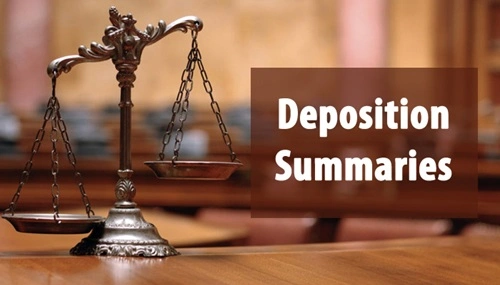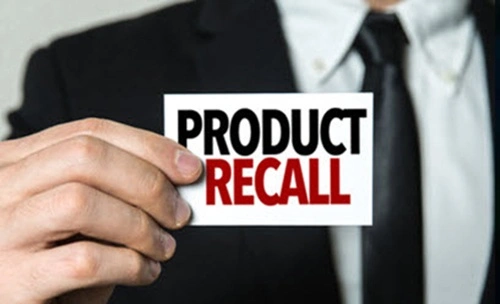Understanding the value of a depo summary service starts with appreciating just how overwhelming raw deposition transcripts can be.
If you’ve ever worked through a 300-page transcript trying to isolate key testimony, you’ll know the time drain—and the risk of missing crucial insights.
That’s where this service comes into play, distilling dense dialogue into crisp, digestible formats that boost both speed and strategy.
A few years back, I worked alongside a trial team preparing for a personal injury case.
The lead attorney handed me a stack of depositions—over 1,200 pages—and asked for the critical takeaways by end of week.
Without summaries, we’d be sifting for hours.
Instead, we leveraged a depo summary service that transformed the transcripts into annotated summaries organized by topic, relevance, and testimony strength.
We saved days in prep time and spotted a contradiction that ended up shifting the entire strategy.

Why Transcripts Alone Aren’t Enough
Deposition transcripts, while vital, are long-winded by nature.
Attorneys, witnesses, and court reporters aren’t writing with brevity in mind.
The average deposition runs for hours, often circling back to the same points.
Reading it all—line by line—can blur details that truly matter.
Now imagine facing a hearing in 48 hours.
Do you really want to spend that time searching for a witness’s exact words about a faulty product component?
That’s the bottleneck depo summaries eliminate.
They isolate the gold buried in verbosity—facts, admissions, contradictions—so you don’t have to mine for them.
A Strategic Weapon in Complex Litigation
Litigation isn’t just about facts; it’s about what you do with them.
And when you’re juggling multiple witnesses, themes, or opposing theories, having streamlined summaries is game-changing.
I recall a construction defect case where we had ten experts across four disciplines.
Each deposition introduced new technical terms and layers of opinion.
By summarizing depositions by discipline and issue, we clearly identified overlaps and inconsistencies.
We could chart a testimony map and build a story for the jury that actually made sense.
Without that tool, we’d still be flipping through exhibits and post-it notes trying to remember who said what about soil grading.
Key Features of an Effective Deposition Summary
Not all summaries are created equal.
Some are just glorified note sheets—too vague to be helpful.
But a high-quality summary should give you clarity, confidence, and control over your case.
Here’s what to look for:
Thematic Organization
Summaries should follow case themes, not just the deposition’s sequence.
This helps attorneys prep questions, briefs, and trial themes in alignment with strategy.
Highlighted Key Testimony
Look for callouts of critical phrases, contradictions, or impactful statements.
Bold or annotated sections make it easy to find them again later.
Page-Line Citations
These allow fast cross-referencing when preparing motions or trial exhibits.
No more guessing where in the transcript something was said.
Objective vs. Subjective Tone
The best summaries are factual, not interpretive.
Let the facts speak; your analysis should come after.
Real-Life Time Saver for Law Firms
One paralegal told me their team used to spend 4–5 hours per deposition just pulling facts.
Once they started using summaries, that dropped to under 90 minutes.
Multiply that by ten depositions in a mid-size case, and you’re looking at a week’s worth of time saved.
Another litigation partner I worked with mentioned how a summary helped them uncover a credibility issue.
A witness gave different descriptions of the same event across two depositions.
The inconsistency was obvious when viewed side by side in the summaries but buried in the full transcripts.
That insight helped force a favorable settlement.
How It Supports Trial Prep and Settlement
When you’re heading into mediation or trial, depo summaries give you a playbook.
You can quickly prep outlines, anticipate rebuttals, and even build closing arguments.
They also help experts get up to speed without sifting through the full transcript.
And let’s be honest—judges appreciate lawyers who come prepared and to the point.
I once saw a judge commend a team for citing line-by-line contradictions that were spotted using summaries.
That kind of prep work makes an impression.
Not Just for Lawyers: Paralegals, Adjusters, and Analysts Benefit Too
Legal support staff often bear the brunt of doc-heavy work.
Summaries empower them to provide faster, more accurate support.
They help insurance adjusters quickly evaluate exposure and claims adjusters make data-driven calls.
Even financial and compliance teams use depo insights to adjust risk models and internal controls.
It’s not just about court—these summaries impact broader legal operations.
When to Use a Deposition Summary
While some attorneys still prefer full transcripts, summaries are essential in:
- High-volume litigation with multiple witnesses
- Time-sensitive motion practice
- Pre-trial planning and cross-exam prep
- Insurance and product liability cases
- Corporate investigations and audits
If you’re dealing with more than a few depositions, the return on investment is undeniable.
Final Thoughts
Legal professionals know that time and clarity are two of the most precious assets in a case.
A well-structured depo summary service can unlock both.
Whether you’re chasing contradictions, prepping for trial, or just trying to keep things straight, summaries offer a layer of insight that raw transcripts simply don’t provide.
They’re not just convenient—they’re strategic.
And if you’re curious about just how much time they can save, take a look at this real-world breakdown of a depo summary service that helped a team cut prep time by 30%.
Sometimes the edge you need isn’t louder—it’s sharper.

